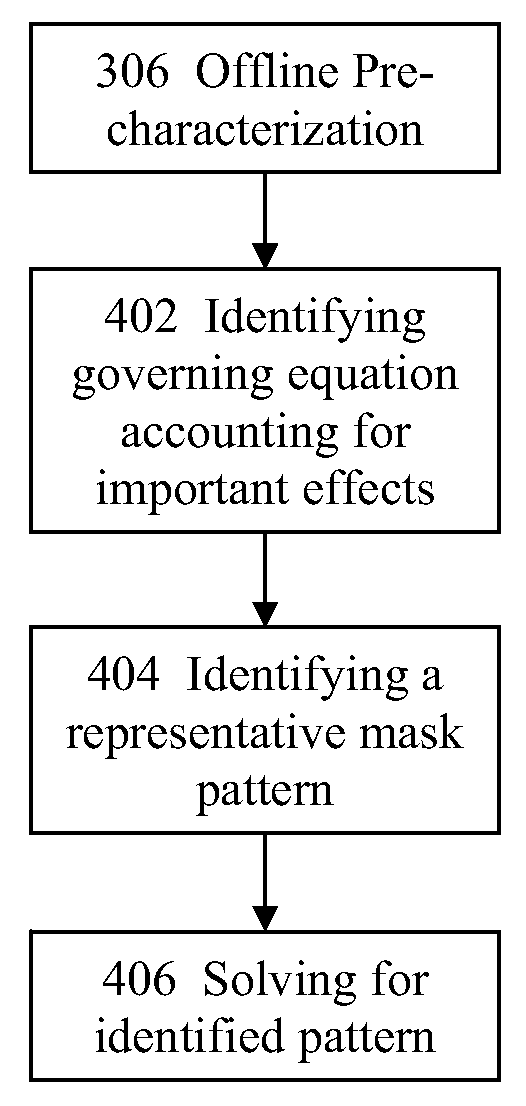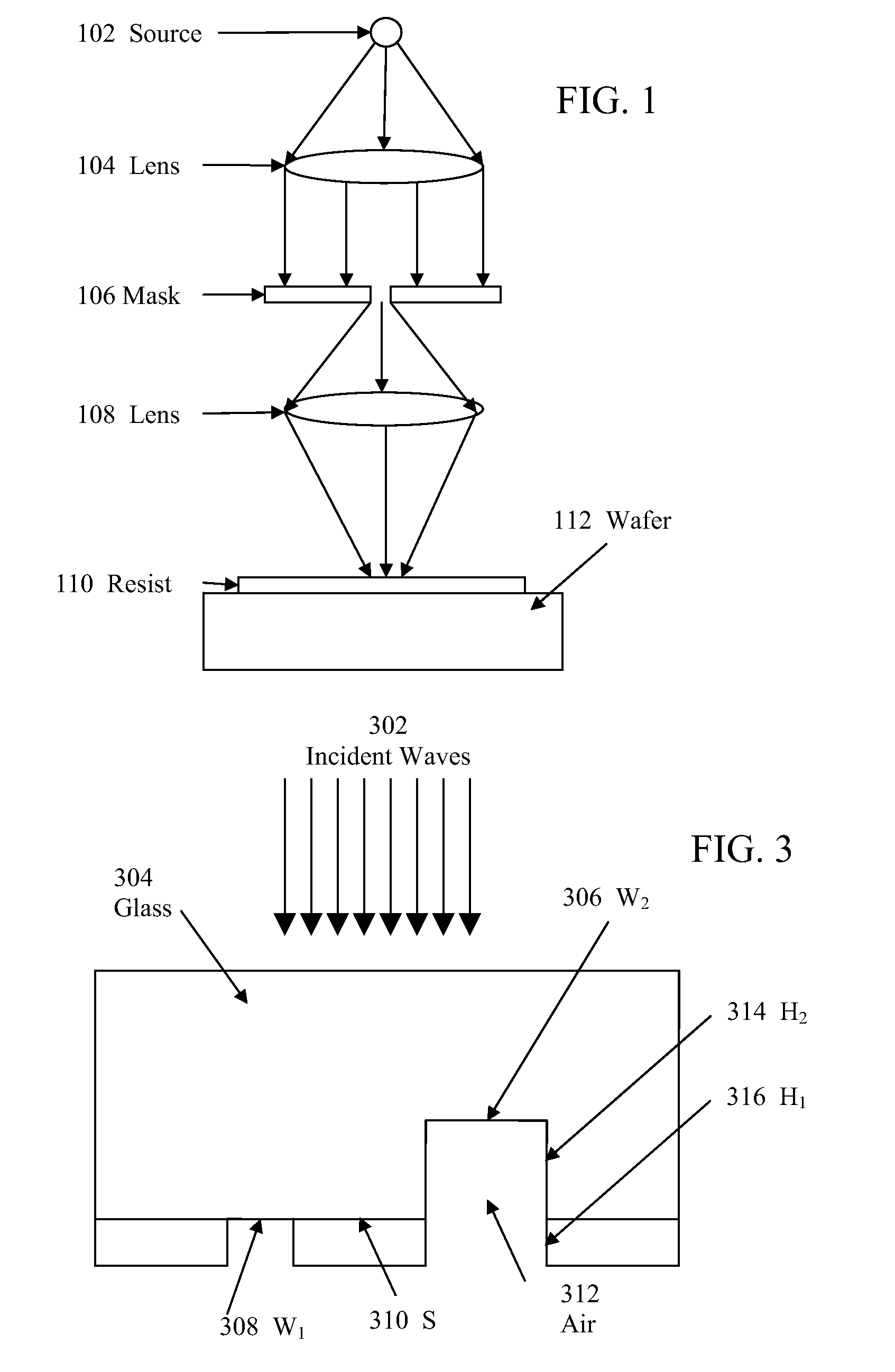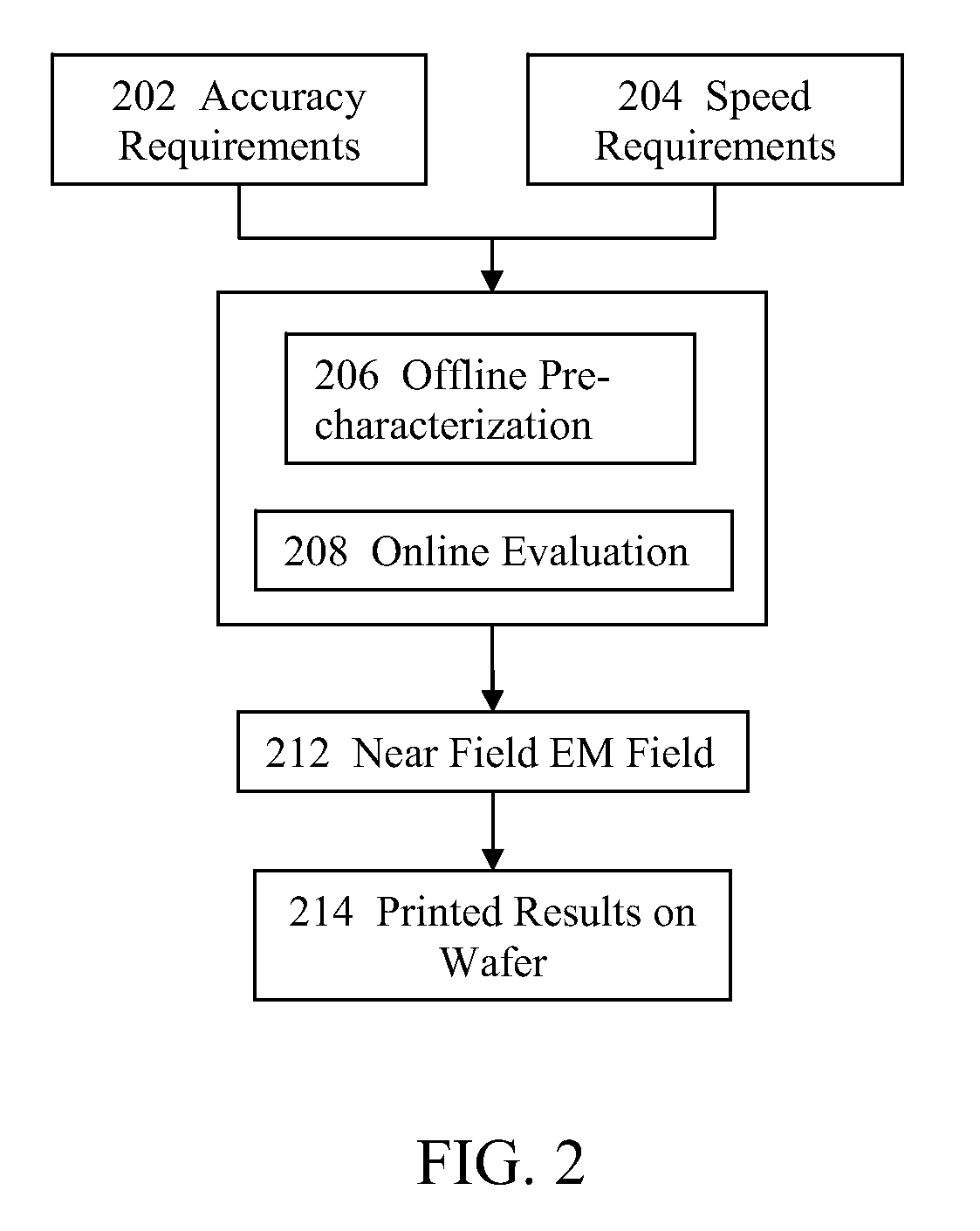Method, system, and computer program prodcut for lithography simulation in electronic design automation
a technology of electronic design automation and simulation, applied in the field of electronic design automation technology, can solve the problems of parasitic resistance and parasitic capacitance, the cost of manufacturing photomasks, and the inability to meet the requirements of the design process, so as to optimize the performance of the integrated circuit, reduce power consumption, and minimize the amount of parasitic resistance
- Summary
- Abstract
- Description
- Claims
- Application Information
AI Technical Summary
Benefits of technology
Problems solved by technology
Method used
Image
Examples
Embodiment Construction
[0032]The invention is described with reference to specific embodiments. It will, however, be evident that various modifications and changes may be made thereto without departing from the broader spirit and scope of the invention. The reader is to understand that the specific ordering and combination of process actions shown in the process flow diagrams and system components in component diagrams described herein are merely illustrative, and the invention can be performed using different, additional, or different combinations / ordering of process actions and components. The specification and drawings are, accordingly, to be regarded in an illustrative rather than restrictive sense.
[0033]Various embodiments of the invention which are directed to an improved method, system, and computer program product for implementing a process for lithographic simulation. The process comprises an act of offline pre-characterization which comprises generating a library or a library of model(s) for one...
PUM
 Login to View More
Login to View More Abstract
Description
Claims
Application Information
 Login to View More
Login to View More - R&D
- Intellectual Property
- Life Sciences
- Materials
- Tech Scout
- Unparalleled Data Quality
- Higher Quality Content
- 60% Fewer Hallucinations
Browse by: Latest US Patents, China's latest patents, Technical Efficacy Thesaurus, Application Domain, Technology Topic, Popular Technical Reports.
© 2025 PatSnap. All rights reserved.Legal|Privacy policy|Modern Slavery Act Transparency Statement|Sitemap|About US| Contact US: help@patsnap.com



